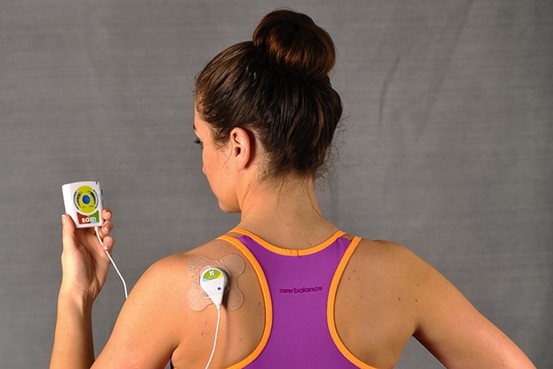As glucose monitors, continuous ultrasound systems, Fitbits and other wearable technology become more prevalent, the devices are changing the way doctors care for their patients and the way patients care for themselves.
Wearable technology is still evolving, but doctors already see the benefits, says Stephen Huot, a medical professor at Yale University. And while technology is not a substitute for doctor-patient conversations, “it could be game changing,” he says.
A nationwide Pew Research Center survey in 2012 found that 69 percent of adults monitor at least one health indicator, such as weight, diet or exercise, and 21 percent said they used some form of technology to keep track. That number is projected to increase as wearable technology becomes more available. By 2025, some experts say, wearable and embedded devices will be common.
Pew Center also reported that 46 percent of those surveyed said that keeping track of health data changed their overall approach to maintaining their health or the health of someone for whom they provide care. In addition, 40 percent said tracking data led them to ask a doctor new questions or prompted them to get a second opinion.
Adam Mayerson, a Hamden endocrinologist, prescribes wearable technology, including glucose monitors and insulin pumps, to many of his diabetic patients.
Instead of waiting for blood test results, Mayerson’s patients use the glucose monitors. By inserting a small patch with a wire lead under the skin, blood-sugar levels are measured every five minutes. The results are beamed to a pocket-sized device that both displays numbers and tells a patient whether their levels have increased or decreased.
“It gives more context,” Mayerson says explaining that he can download up to three months of patient data from the device to create charts and graphs.
Patients can also send data from the device to smartphones. They still have to perform blood tests, Mayerson says, but they only have to do so twice a day rather than six to 10 times a day.
In addition to glucose monitors, Mayerson is a proponent of insulin pumps. The computerized devices deliver a constant amount of insulin throughout the day and can deliver more when a patient is eating. Pumps are more convenient than injections, and will only improve with technological advancements, Mayerson says.
Mayerson also encourages his patients to use of Fitbits, pedometers and apps that help track diet and exercise.

ZetroOz.com Photo
ZetroOz developed this battery-powered ultrasound therapy device.
In a 2014 report, Endeavour Partners, a strategy consulting firm that specializes in mobile and digital businesses and technologies, reported that one in 10 U.S. consumers over the age of 18 owned an activity tracker such as a Fitbit.
For Megan Doherty of New Haven, technology has made living with diabetes better in many of the ways. Doherty, who is not a patient of Mayerson, uses a glucose monitor that she carries in a small, pink leather case and an insulin pump that is attached to her at all times. The devices provide her with trend and history information. The immediate feedback helps her to make better decisions, she says.
“I feel more in control of my diabetes, which means I feel safer doing higher-risk activities like parenting and driving,” Doherty says.
Wearable technology has also helped Dianna Cutler of the Southport section of Fairfield.
Cutler suffered from a frozen shoulder, and her physical therapist suggested she use sam® Professional System, a battery-powered device that provides continuous ultrasound therapy for up to four hours a day. ZetrOZ, a Trumbull-based company, created the device, which the U.S. Food and Drug Administration approved in 2014. Cutler used it for about 2½ months, placing it under clothing while she did her normal activities.
“The very first day after using the sam® product, I experienced relief,” Cutler says. “It was almost a miracle, and the increased mobility was apparent after the first use.”
The device also helped Stamford resident Michael Kirshbaum. He said the sam® system accelerated the mobility and healing of a partially torn rotator cuff and reduced his pain. The device was an alternative to painkillers, which could have damaged the transplanted liver he received eight years ago, he says.
“If technology can assist in healing, I am all for it,” Kirshbaum says.
As an assistant professor in the Department of Orthopaedic Surgery at UConn Health Center in Farmington, Cory Edgar prescribes the sam® system. He said it is easy to use, improves circulation and may reduce pain and improve healing capacity. As a bonus, there are no significant side effects, he says.
“I believe in the technology and approach as a clinical scientist,” Edgar says. “I have seen some early and clear subjective results in my patients.”
Huot notes that wearable technology is mostly prescribed by doctors in cardiovascular and internal medicine. The devices provide objective data—real-time feedback—that allows patients to be more engaged and more honest with themselves. The data also can spark conversation in a doctor’s office, he says.
But while a useful tool, Huot urges caution when using wearable devices. Doctors need better ways of getting the information and assessing it, he says. “I think the technology is going to develop quicker than the interface.”